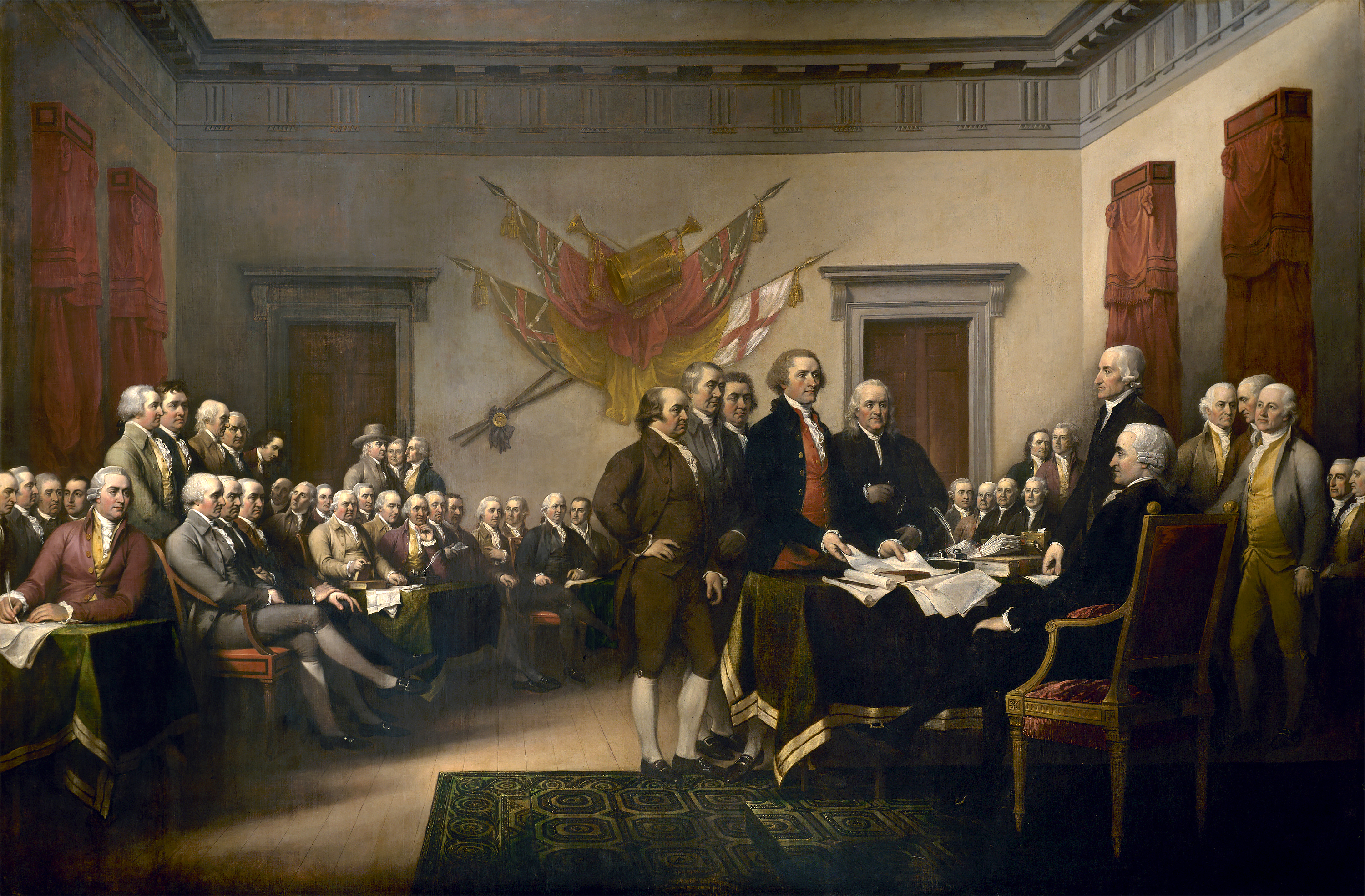
Founding Fathers of the United States
The Founding Fathers of the United States, commonly referred to as the Founding Fathers, were a group of late-18th-century American revolutionary leaders who united the Thirteen Colonies, oversaw the War of Independence from Great Britain, established the United States of America, and crafted a framework of government for the new nation.
"Founding Fathers" redirects here. For the founding fathers of other countries, see List of national founders.Founding Fathers of the United States
Signers of the Declaration of Independence (1776), Articles of Confederation (1781), and United States Constitution (1789)
America's Founding Fathers include those who signed the United States Declaration of Independence, Articles of Confederation, and the United States Constitution, and others. In 1973, historian Richard B. Morris identified seven figures as key founders, based on what he called the "triple tests" of leadership, longevity, and statesmanship: John Adams, Benjamin Franklin, Alexander Hamilton, John Jay, Thomas Jefferson, James Madison, and George Washington.[2]
Most of the Founding Fathers hailed from English ancestry, though many had family roots extended across various regions of the British Isles, including Scotland, Wales, and Ireland. Additionally, some traced their lineage back to the early Dutch settlers of New York (New Netherland) during the colonial era, while others were descendants of French Huguenots who settled in the colonies, escaping religious persecution in France.[3][4][5]
Religious freedom[edit]
Religious persecution had existed for centuries around the world and it existed in colonial America.[392] Founders such as Thomas Jefferson, James Madison, Patrick Henry, and George Mason first established a measure of religious freedom in Virginia in 1776 with the Virginia Declaration of Rights, which became a model for religious liberty for the nation.[393] Prior to this, Baptists, Presbyterians, and Lutherans had for a decade petitioned against the Church of England's efforts to suppress religious liberties in Virginia.
Jefferson left the Continental Congress to return to Virginia to join the fight for religious freedom, which proved difficult since many members of the Virginia legislature belonged to the established Church of England. While Jefferson was not completely successful, he managed to have repealed the various laws that were punitive toward those with different religious beliefs.[393][394][395] Jefferson was the architect for separation of Church and State, which opposed the use of public funds to support any established religion and believe it was unwise to link civil rights to religious doctrine.[396][395]
The United States Constitution, ratified in 1788, states in Article VI that "no religious Test shall ever be required as a Qualification to any Office or public Trust under the United States". Freedom of religion and freedom of speech were further affirmed as the nation's law in the Bill of Rights. [392] The 14th Amendment of 1868 provided all Americans with "equal protection under the laws" and thus applied the First Amendment restriction against limiting the free exercise of religion to the states. [397][398]
Washington, a local leader of the Church of England, was also a strong proponent of religious freedom, He assured Baptists worried that the Constitution might not protect their religious liberties, that, "... certainly, I would never have placed my signature to it." Jews also viewed Washington as a champion of freedom and sought his assurances that they would enjoy complete religious freedom. Washington responded by declaring America's revolution in religion stood as an example for the rest of the world.[399]